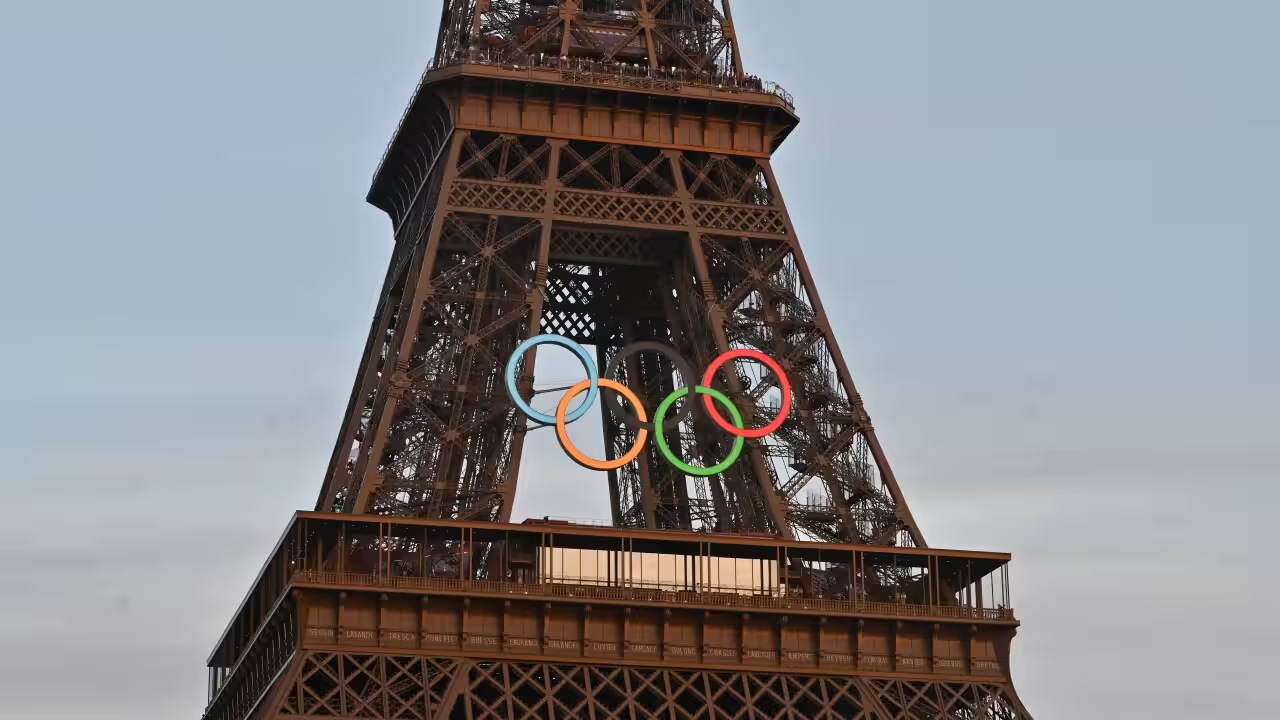In a surprising and somewhat controversial move, the Eiffel family has requested the removal of the Olympic rings from the Eiffel Tower. This request has sparked a significant debate just as Paris gears up to host the 2024 Summer Olympics. The Eiffel Tower, a global icon and symbol of Parisian elegance, has been adorned with the Olympic rings as part of the city’s efforts to celebrate and promote the upcoming Games. However, the Eiffel family argues that this addition disrupts the tower’s historical integrity and aesthetic appeal.
Historical Significance of the Eiffel Tower
The Eiffel Tower, constructed by the renowned engineer Gustave Eiffel for the 1889 Exposition Universelle (World’s Fair), was initially intended as a temporary structure. Standing at 324 meters, it was the tallest man-made structure in the world until the completion of the Chrysler Building in New York in 1930. Eiffel’s design was initially met with criticism from Parisian artists and intellectuals who felt the tower’s iron latticework was an eyesore. However, it has since become one of the most recognizable and beloved landmarks globally.
The tower was designed as a demonstration of France’s engineering prowess and was intended to showcase modern industrial techniques. Its unique design, combining both functional and aesthetic elements, was revolutionary for its time. Over the years, the Eiffel Tower has come to symbolize not only Paris but also the spirit of innovation and artistic achievement that defines the French cultural heritage.
The Olympic Rings: Symbolism and Purpose
The Olympic rings, designed by Pierre de Coubertin in 1913, are a symbol of the Olympic Games, representing the five continents of Africa, the Americas, Asia, Europe, and Oceania. They have been displayed on various landmarks around the host cities of the Games to celebrate the international spirit of the Olympics and promote the event.
In Paris, the rings have been prominently displayed on the Eiffel Tower as part of the city’s efforts to welcome and engage with visitors from around the world. The decision to adorn the tower with the rings was made to generate excitement, foster a sense of unity, and emphasize Paris’s role as a global city of culture and sports.
Eiffel Family’s Objections: A Clash of Tradition and Modernity
The Eiffel family, descendants of Gustave Eiffel, have expressed their objections to the display of the Olympic rings on the tower. In a statement, they emphasized that the Eiffel Tower is more than just a landmark; it is a symbol of French history and engineering excellence. The family argues that the addition of the Olympic rings, while well-intentioned, detracts from the tower’s historical and architectural significance.
The family’s objections are rooted in a broader concern about preserving the integrity of historical monuments. They believe that while modern events like the Olympics are important, they should not come at the cost of altering or overshadowing landmarks that represent a nation’s cultural heritage. The Eiffel family’s stance reflects a growing sentiment that historical sites should remain unaltered to preserve their original significance.
Public and Official Reactions
The public reaction to the Eiffel family’s request has been mixed. Some Parisians and tourists have expressed support for the family’s viewpoint, arguing that the Olympic rings are a temporary addition that disrupts the tower’s classic appearance. These individuals believe that preserving the historical look of the Eiffel Tower should take precedence over temporary decorations. They feel that the tower’s grandeur and historical value are compromised by such modern additions.
Conversely, many people view the Olympic rings as a celebration of Paris’s role as the host city for the 2024 Olympics. Supporters argue that the rings serve as a positive and inclusive symbol, reflecting the global nature of the Games and the city’s commitment to international sporting events. They see the rings as a way to generate excitement and engagement among locals and visitors, fostering a sense of pride and unity.
Paris Mayor Anne Hidalgo has acknowledged the Eiffel family’s concerns but has also defended the decision to display the Olympic rings. She stated that while the city respects the tower’s heritage, it is also important to celebrate the Olympics, which are a significant global event that will bring attention and economic benefits to Paris. Hidalgo’s office has indicated that discussions will continue to address the concerns raised by the Eiffel family while finding ways to honor the Olympic Games.
Comparative Examples: How Other Cities Manage Historical Sites
The debate over the Eiffel Tower’s appearance is not unique to Paris. Other cities that host major global events, such as the Olympics, often face similar challenges when it comes to integrating modern elements with historical landmarks. For example, the Sydney Opera House and the London Eye have both been adorned with temporary decorations during major events, such as international festivals or sporting events. These additions were generally well-received but also sparked discussions about the impact on the landmark’s aesthetic and historical value.
In Sydney, the Opera House was illuminated with special light displays during the Sydney 2000 Olympics, which were designed to celebrate the event while respecting the building’s architectural integrity. Similarly, during the 2012 London Olympics, the London Eye was decorated with colors and lights that highlighted the Games but were carefully designed to avoid overshadowing the landmark’s iconic appearance.
These examples illustrate the delicate balance cities must strike between celebrating contemporary events and preserving the historical significance of their landmarks. The Eiffel Tower’s case highlights the ongoing challenge of maintaining this balance while engaging with global audiences.
Potential Solutions and Compromises
As the debate over the Olympic rings on the Eiffel Tower continues, several potential solutions and compromises could be explored. One option could involve using temporary installations that can be easily removed after the Games. This approach would allow Paris to celebrate the Olympics without permanently altering the tower’s appearance.
Another possibility is to explore alternative ways to honor the Olympic Games that do not involve modifying the Eiffel Tower itself. For instance, temporary exhibitions or displays could be set up in nearby locations to promote the Olympics while preserving the tower’s historical integrity. Creative solutions, such as digital projections or interactive installations, could also provide a way to celebrate the Games without physical alterations to the landmark.
Impact on Paris’s Global Image
The controversy surrounding the Olympic rings on the Eiffel Tower has implications for Paris’s global image. As a host city for the Olympics, Paris has an opportunity to showcase its cultural and historical heritage while engaging with a global audience. The decision to display the rings on the Eiffel Tower reflects the city’s desire to embrace the international spirit of the Games and generate excitement for the event.
However, the ongoing debate highlights the complexities of managing historical landmarks in the context of contemporary events. How Paris navigates this situation will influence its reputation as a city that values both its rich heritage and its role on the global stage. The resolution of this issue will set a precedent for how other cities approach similar challenges in the future.
Looking Ahead: The Final Decision
As Paris prepares for the 2024 Olympics, the final decision on the Olympic rings’ display on the Eiffel Tower will likely be reached through continued discussions and negotiations. Both the Eiffel family and city officials are expected to engage in further dialogue to address the concerns raised and explore potential solutions that balance historical preservation with contemporary celebrations.
The outcome of this debate will be closely watched by both locals and international observers. It will provide insight into how cities can honor their historical landmarks while participating in global events, and it will shape the future approach to managing the intersection of heritage and modernity.
Eiffel Tower Controversy: Balancing Heritage and Modern Celebrations
The debate over the Olympic rings on the Eiffel Tower underscores the broader challenge of integrating modern celebrations with historical landmarks. As Paris approaches the 2024 Olympics, the city must navigate the delicate task of preserving its rich heritage while embracing global festivities. The resolution of this controversy will set a precedent for how cities manage the intersection of tradition and contemporary events, shaping the future of landmark preservation and event celebration.





